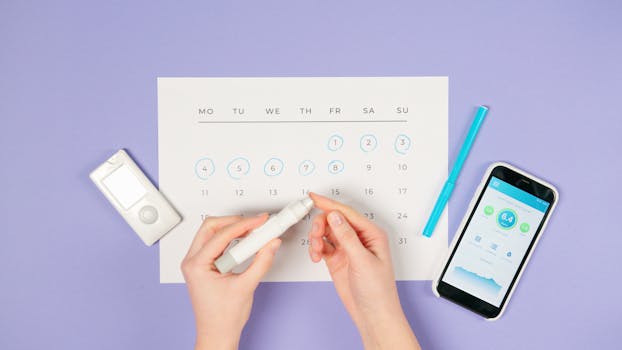
**
Mattel has taken a significant leap towards inclusivity and representation with the unveiling of its first-ever doll featuring a type 1 diabetes (T1D) diagnosis. This groundbreaking move marks a pivotal moment in the fight for better representation of chronic illnesses in children's toys and is already generating significant buzz across social media with hashtags like #BarbieT1D, #DiabetesAwareness, and #RepresentationMatters trending globally. This isn't just a doll; it's a powerful symbol of hope and understanding for millions of children and families living with T1D.
A Landmark Moment for Diabetes Representation
For years, advocates have championed for more realistic and diverse representation within the toy industry. The lack of dolls reflecting common health conditions, such as type 1 diabetes, has left many children feeling isolated and misunderstood. This new Barbie, complete with a discreet insulin pump and continuous glucose monitor (CGM) accessory, changes the game entirely.
The inclusion of a CGM is particularly significant. CGMs are life-altering devices for individuals managing T1D, constantly monitoring glucose levels and alerting users to potential highs or lows. The realistic depiction of this technology in Barbie’s design normalizes the use of medical devices and helps dispel harmful stigmas often associated with chronic illnesses. Children with T1D can finally see themselves reflected in a beloved icon, fostering a sense of normalcy and self-acceptance.
Beyond the Aesthetics: The Impact of Inclusive Toy Design
This isn’t merely about aesthetics; it’s about promoting understanding and empathy. The doll serves as an educational tool, opening dialogue about T1D within families and classrooms. It provides a tangible representation of a condition that many may not understand, making it easier for children to engage in conversations about diabetes management and healthcare. By including the CGM and insulin pump, Mattel is subtly educating children and adults alike about the realities of living with this condition.
This move aligns perfectly with growing trends toward greater diversity and inclusion within the toy industry, a response to increasing societal demands for more realistic representation of various body types, ethnicities, and abilities. The positive impact on children’s self-esteem and mental health cannot be overstated, particularly for those who have long felt unseen and unheard.
The Details: What Makes This Barbie Different
This isn't just a simple update to an existing Barbie. Mattel collaborated extensively with experts in diabetes care and advocacy groups to ensure the doll's accurate and sensitive representation of T1D management. Key features include:
- Discreet Insulin Pump: The insulin pump is subtly integrated into the doll’s design, reflecting the reality that many individuals wear these devices discreetly.
- Realistic CGM Sensor: The CGM sensor is also realistically depicted, highlighting a crucial aspect of modern T1D management.
- Educational Resources: Mattel is reportedly partnering with diabetes organizations to provide educational resources alongside the doll, offering parents and children valuable information and support.
- Diverse Skin Tones & Hair Textures: As with all recent Barbie releases, the new diabetes doll is available in a range of diverse skin tones and hair textures, promoting broader inclusivity.
These meticulously designed details showcase Mattel's commitment to responsible representation and contribute significantly to the doll's positive impact.
The Power of Play and Representation
Play is crucial to a child's development. Toys are not merely objects; they are tools for self-expression, imagination, and social learning. By incorporating a doll with a chronic illness, Mattel is expanding the possibilities of imaginative play and allowing children to explore themes of health, resilience, and self-management in a safe and fun way.
This move transcends the typical marketing strategies. It demonstrates a commitment to social responsibility and a deep understanding of the impact of representation on children's self-image and understanding of the world around them. It's a testament to the power of using toys to foster empathy, understanding, and inclusivity.
Looking Ahead: A Future of Inclusive Toy Design
Mattel's initiative with the type 1 diabetes Barbie sets a powerful precedent for other toy manufacturers. It's a call for greater inclusivity and a recognition of the diverse needs and experiences of children worldwide. This isn't just about selling dolls; it's about fostering a more compassionate and understanding world.
The success of this doll is likely to encourage other companies to follow suit, creating a ripple effect that could lead to greater representation of various health conditions, disabilities, and lived experiences in children's toys. This could lead to a wider range of dolls representing individuals with conditions like:
- Autism Spectrum Disorder (ASD)
- Cerebral Palsy
- Down Syndrome
- Visual Impairments
- Hearing Impairments
The future of toy design promises to be one where all children see themselves reflected, valued, and understood. Mattel's brave step with the T1D Barbie is a vital step in that direction, fostering a world where everyone feels included and empowered.
This groundbreaking doll is more than just a toy; it’s a symbol of progress, acceptance, and the power of representation. The #BarbieT1D doll is a testament to Mattel’s commitment to inclusivity and a beacon of hope for children living with type 1 diabetes. Its impact extends far beyond the toy aisle, promoting understanding, acceptance, and ultimately, a more compassionate world.




















